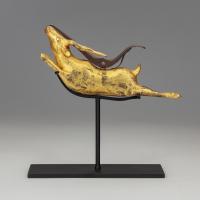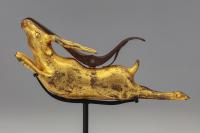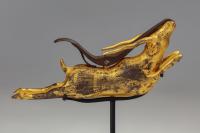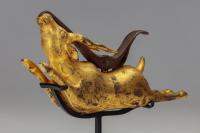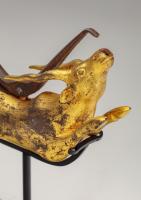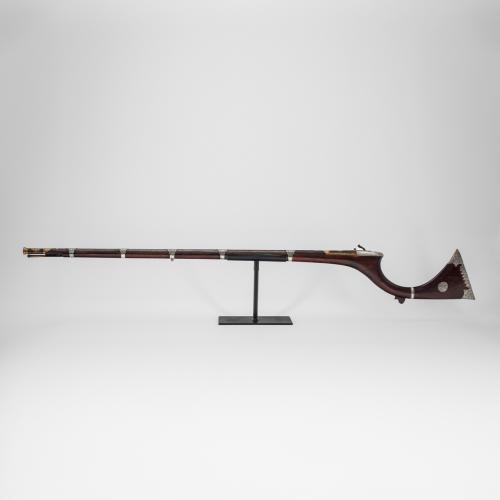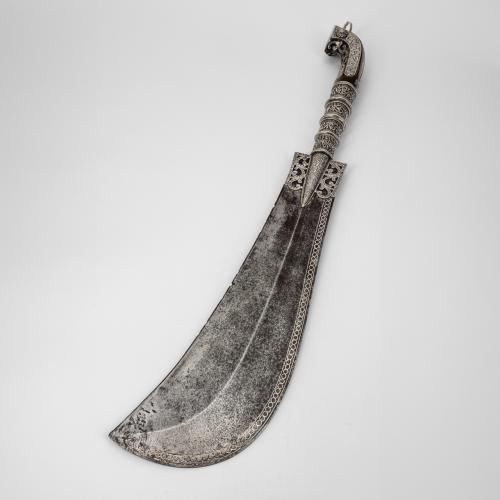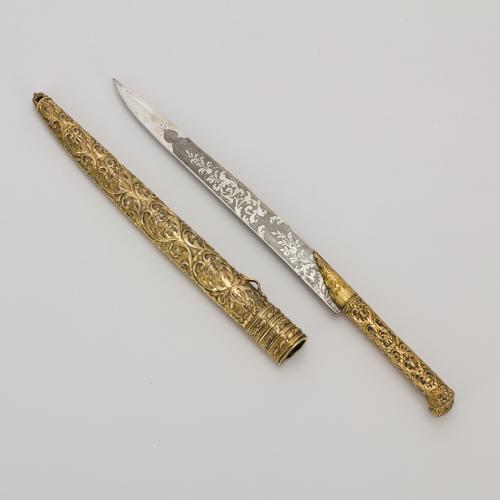
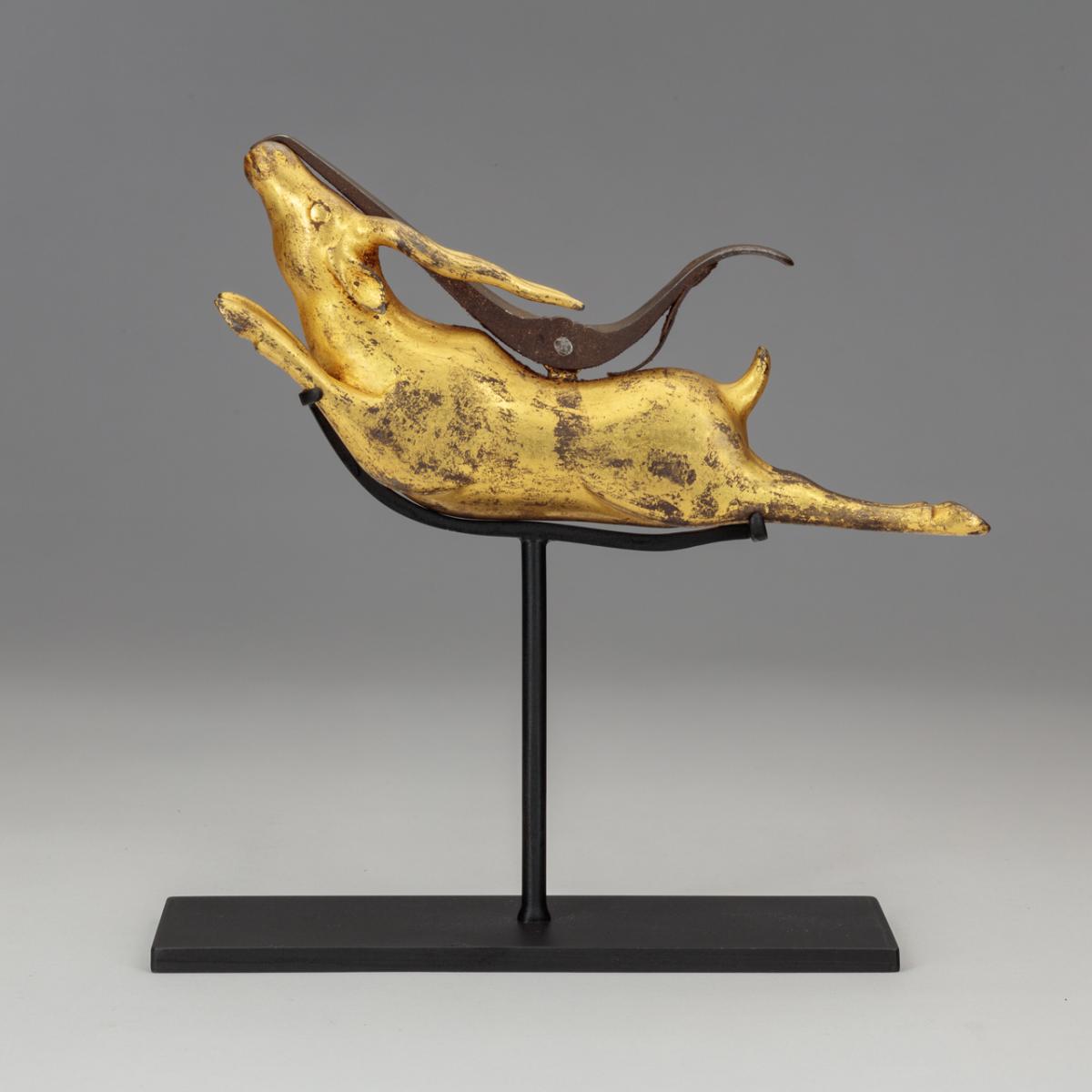
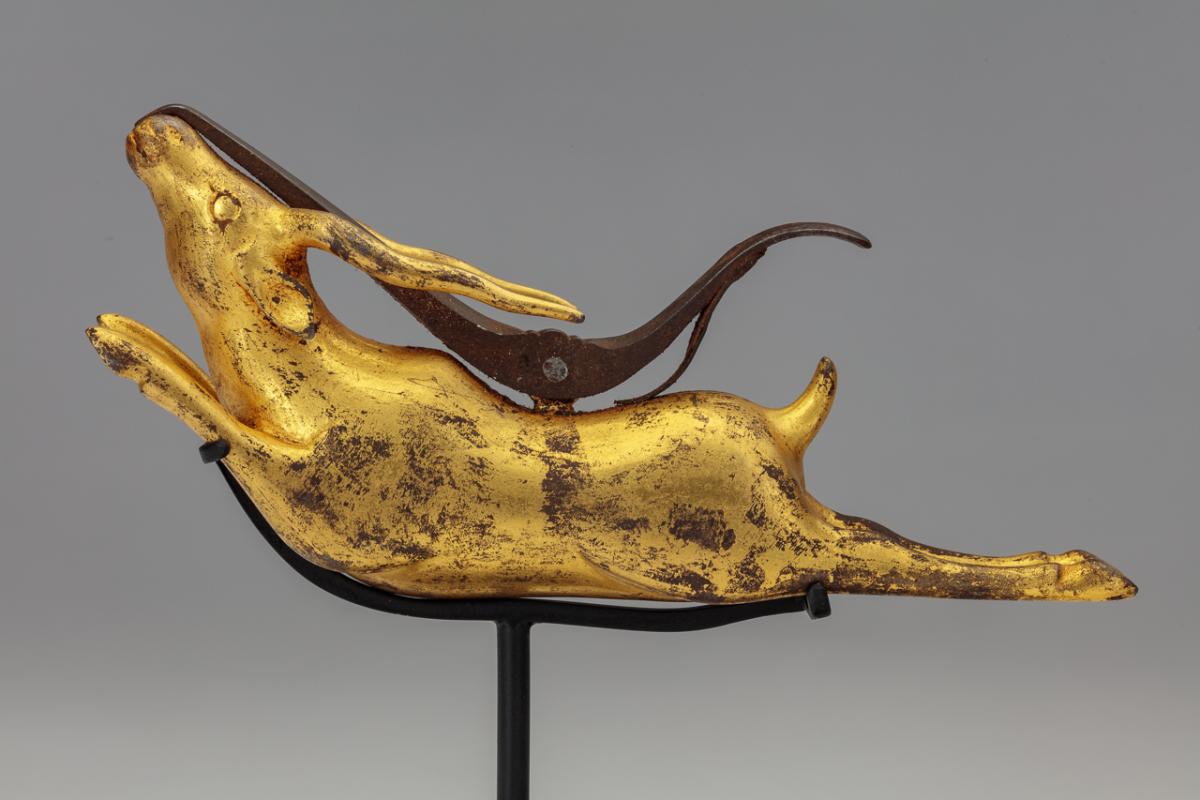
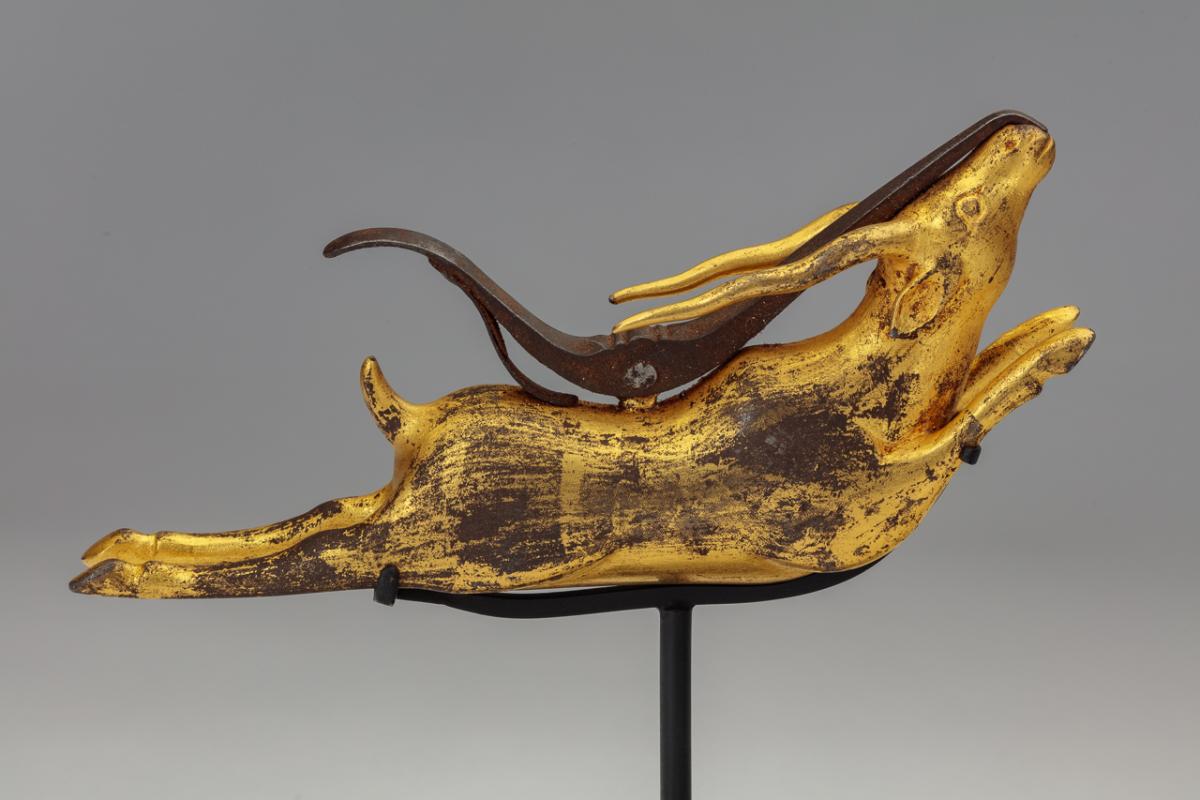
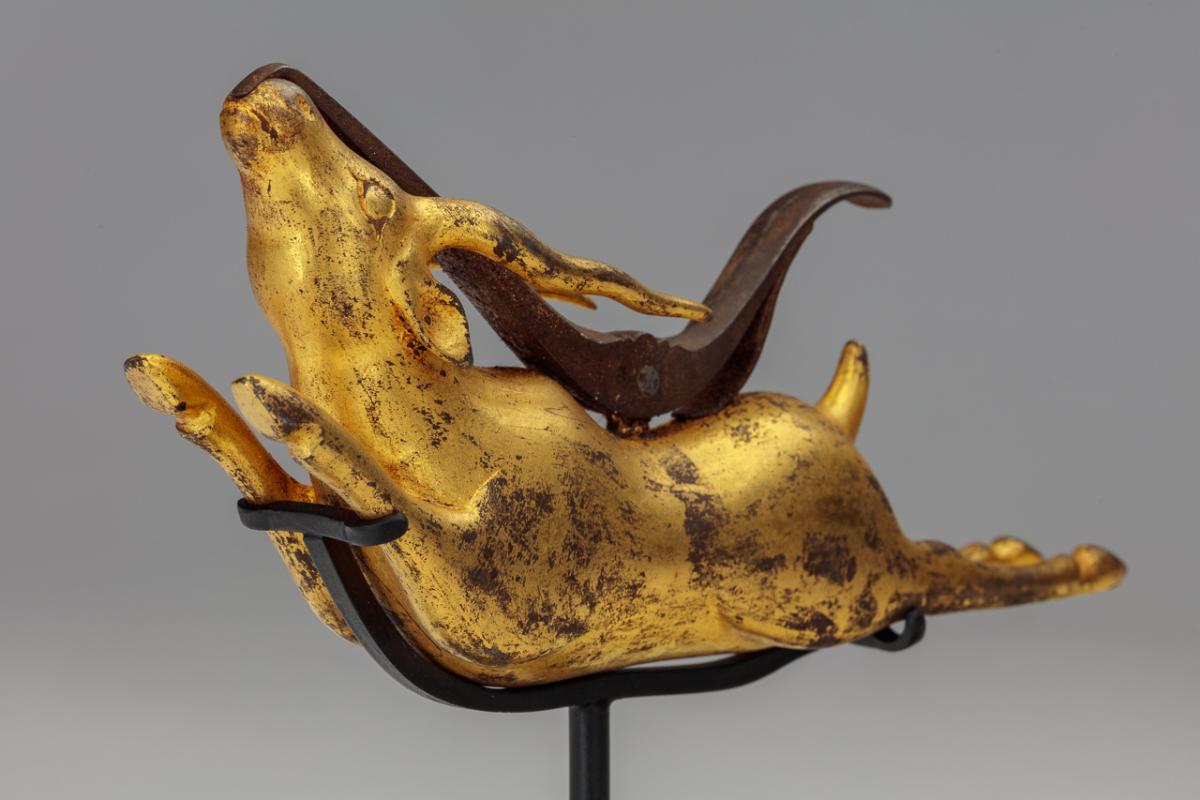
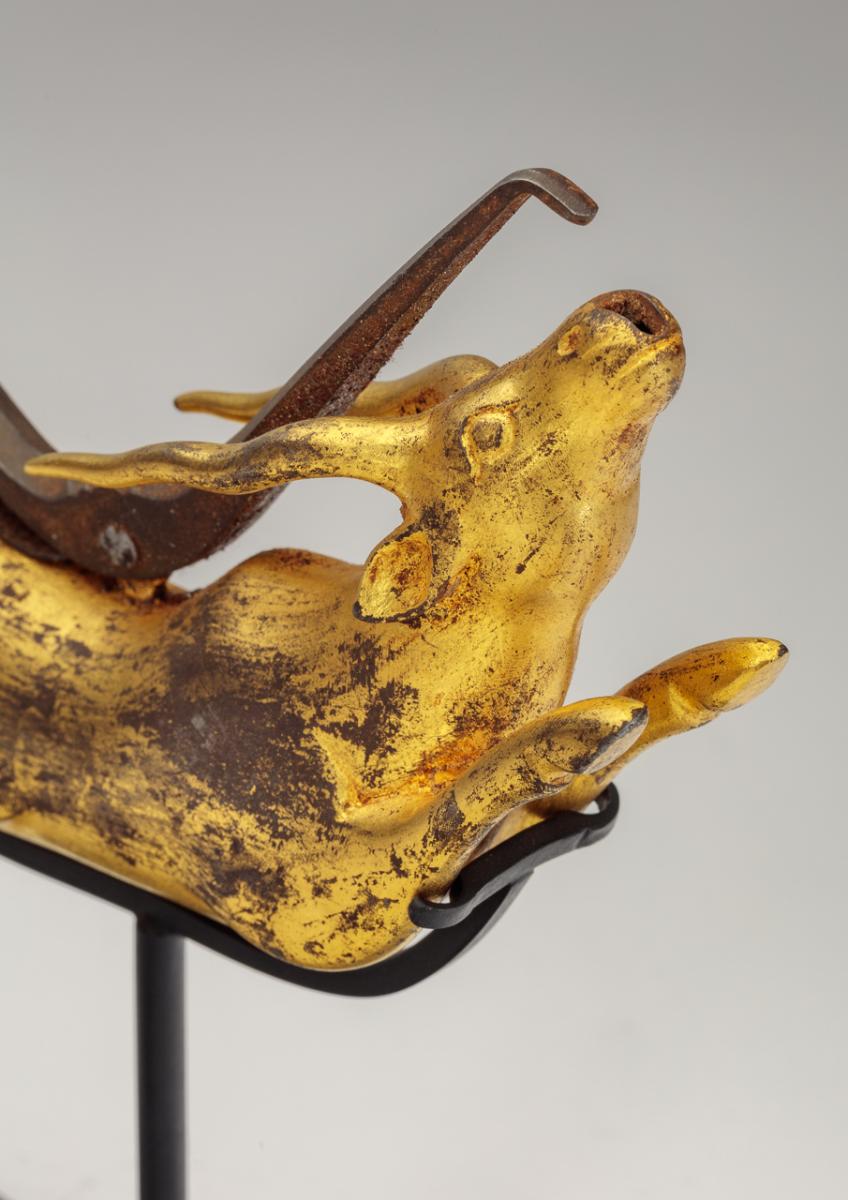
Price on application
This object is eligible for a Certificate of BADA Provenance
The BADA Standard
- Since 1918, BADA has been the leading association for the antiques and fine art trade
- Members are elected for their knowledge, integrity and quality of stock
- Our clients are protected by BADA’s code of conduct
- Our dealers’ membership is reviewed and renewed annually
- Bada.org is a non-profit site: clients deal directly with members and they pay no hidden fees
A Gilt-Steel Priming Flask.
India, 18th Century.
gilt steel.
21.2cm long.
A rare and striking gilt steel zoomorphic priming flask in an upward curved shape, representing a leaping antelope. Resting on the back of the antelope, a spring-operated stopper is fixed on the centre of the flask. When pressed, the stopper uncovers a small hole at the front extremity of the antelope to pour out the amount of priming powder required.
‘These were made to hold the fire powder used to “prime” the flashpan and touchhole of a musket. Once ignited, the priming powder detonated the charge powder and thus caused the weapon to fires’ (The Arts of India, p. 424). A powder horn was used to carry the charge powder, while a small flask like this one would hold the priming powder, which was a very finely grained powder. Jean-Baptiste Clais explains that the reason why priming flasks were so small was because the flash pan needed a very small amount of priming powder.
The animal motif indicates the use of this object in hunting settings, where animals such as deer, antelope, and nilgai were hunted. In India, from the time of the Mughals, hunting became an expedition that served a purpose beyond food procurement. It held important symbolic value. The hunt allowed the rulers and their families to assert their power over their land and nature, while also helping increase their visibility amongst their subjects through travel. For this reason, the hunt frequently appears in Mughal miniature paintings.
Priming flasks from north India from the 17th century onwards have been widely found and similarly, are in the form of animals such as antelopes and deer. However, unlike this flask, these are all exclusively made of ivory, are made of two pieces, and have elaborate carvings depicting scenes of the hunt.
Comparative materials:
Clais, Jean-Baptiste. ‘Imperial Mughal Ivory Priming Flasks. A First Catalogue.’ Journal of the David Collection 5 (2021). https://doi.org/978-87-88464-29-0, p. 112, pp. 106-135
Folsach, Kjeld von, Joachim Meyer, and Peter Wandel. Fighting, Hunting, Impressing - Arms and Armour from the Islamic World 1500-1850. David Collection, 2021, pp. 214-219
Fish Shaped bronze powder flask, The Palace Museum: https://en.dpm.org.cn/collections/collections/2020-03-05/5836.html
Similar sold at Christie's in 2017.
Bibliography:
Clais, Jean-Baptiste. ‘Imperial Mughal Ivory Priming Flasks. A First Catalogue.’ Journal of the David Collection 5 (2021). https://doi.org/978-87-88464-29-0.
Folsach, Kjeld von, Joachim Meyer, and Peter Wandel. Fighting, Hunting, Impressing - Arms and Armour from the Islamic World 1500-1850. David Collection, 2021.
The BADA Standard
- Since 1918, BADA has been the leading association for the antiques and fine art trade
- Members are elected for their knowledge, integrity and quality of stock
- Our clients are protected by BADA’s code of conduct
- Our dealers’ membership is reviewed and renewed annually
- Bada.org is a non-profit site: clients deal directly with members and they pay no hidden fees


